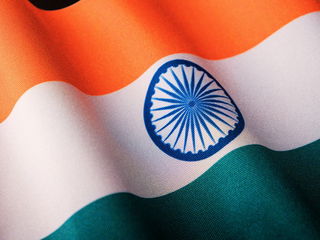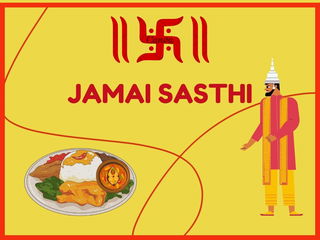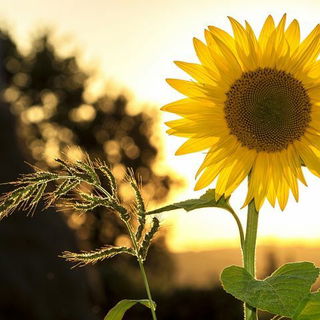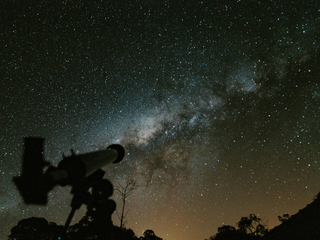The seasons in India as designated by the Indian Metrological Department are Spring, Summer, Monsoon, Autumn (which is more like a post-monsoon), and Winter.
The current season in India is Summer.
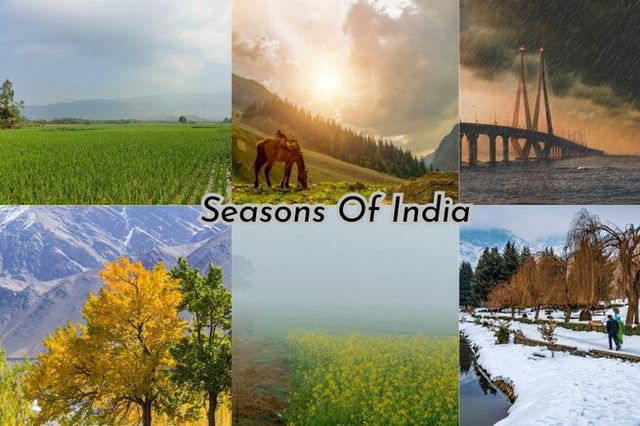
Winter in India typically begins in December with the solstice and lasts until February, varying by location. The season is cold and dry, with some areas experiencing heavy snowfall.
Each of these seasons has a duration of two months and goes as follows:
- Spring : March and April
- Summer : May and June
- Monsoon : July and August
- Autumn : September and late October
- Pre-Winter/Hemant : Late October / early November and early December
- Winter : Rest of December to early February
Spring
Spring in India starts in March and ends in April. It is preceded by winter and followed by summer.
Although spring is supposed to be very pleasant weather, most of India experiences a very humid climate with sudden downpours.
The days are longer than the nights and the average temperature is around 33 °C.
Summer
Summer in India starts end of April and lasts until the end of June. This season experiences the longest days and shortest nights due to the summer solstice.
The scorching heat causes the water level of many water bodies to go down, and the recorded average temperature is 38° C.
In the Northern Regions, the temperature can go as high as 45° C while the climate remains moderate in the Southern Regions with the temperature ranging around 35° C.
Summer is usually characterized by high humidity and dry heat.
Summer is very good for the ripening of crops and the blooming of plants. Several cyclones also happen during this season.
Monsoon
Although the assigned months for the monsoon season are July and August, it arrives in June and sometimes lasts until early September.
The average recorded temperature during this season was 34° C and most of the country experiences torrential rainfall. As a result, floods are a common occurrence every year, and it destroys thousands of crops and homes.
The rain starts slowing down in August, but the after-effects remain.
Autumn
Autumn in India starts in September and lasts until November. The season often blesses us with pleasant weather but the heat stays. However, the temperature starts to cool down soon after.
The average temperature can range from 25° C to 35° C. Since, it is the transitioning season from monsoon to winter, the weather becomes drier.
Days and nights are equal, and it is also the season of the vernal equinox.
Pre-Winter Or Hemant Ritu
Pre Winter or Hemant lasts starts from mid-November and lasts until December-January. The weather becomes cooler and drier.
Trees start shedding their leaves and the lands start getting barren. It is also when the winter solstice happens.
Days are usually shorter than nights, and nights get foggy. Some parts can also experience occasional rainfall.
Winter
Winter in India typically starts in December with the winter solstice and lasts until February, but the duration can change depending on the geographical location.
The weather during this season is frequently cold and dry. Some parts of the country experience heavy snowfall, and it is obviously the coldest season.
The average recorded temperature can range from 20 °C- 22 °C.
How The Geographical Location Affects The Seasons
The weather here is as diverse as the country. India does not really experience straightforward spring or autumn.
The reason behind the occurrence of such contrasting climates is because of the huge differences between latitudes and areas.
The Indian climate can be divided into five different climate zones namely tropical rainforest, tropical monsoon, tropical wet and dry, semi-arid, arid, and alpine.
India stretches approximately from 8°N to 37°N and the country is divided into two parts as the Tropic of Cancer passes right through the middle.
Therefore, the areas located in the south of the Tropic Of Cancer are adjacent to the Equator and as a result, experience high temperatures throughout the entire year.
Besides, the northern parts of India fall into the warm temperature zone and comparatively, those areas experience lower temperatures.
India goes through various climates, ranging from tropical in the South to alpine and moderate in the North Himalayan area.
Elevated areas experience snowfall in the winter. The climate of the country as a whole can be described as a Tropical Monsoon kind.
